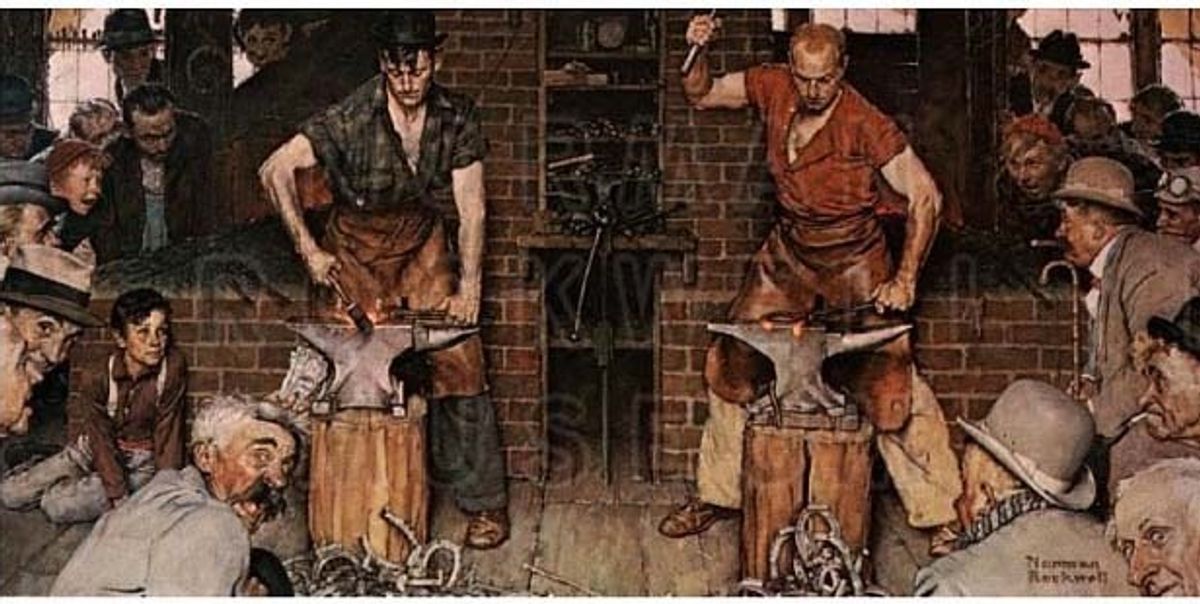The Berkshire Museum in Pittsfield, Massachusetts, plans to auction 40 works of art from its collection, including two original paintings by Norman Rockwell, to fund a $40m endowment and $20m refurbishment of the 114-year-old museum. The move has caused some controversy in museum circles, since works of art are usually sold only to fund further acquisitions. The AAM and the Association of Art Museum Directors (AAMD) have released a joint statement saying that they "are deeply opposed" to the museum’s plan to sell works.
“To think that selling the art will save the future is simply to push the challenge down the road while diminishing the strength of the institution. Disassembling the unique treasure that is our regional museum to save it, is not saving it,” wrote Laurie Norton Moffatt, the director and chief executive of the nearby Norman Rockwell Museum, in an oped in the Berkshire Eagle. “Selling these treasured assets actually poses a debilitating economic ripple effect beyond the museum, not to mention would be a profound spiritual loss to the community.”
Among the 40 works to be sold are two paintings by the American artist Norman Rockwell, including Shaftsbury Blacksmith Shop (1940) and Shuffleton Barbershop (1950)—works that were given to the museum by the artist. The painting of a pair of smithies competing in a horseshoe forging contest was made to illustrate Edward W. O’Brien's short story Blacksmith’s Boy—Heel and Toe, which ran in the Saturday Evening Post, on 2 November 1940. The work Shuffleton Barbershop, painted for the cover of the 29 April 1950 issue of The Saturday Evening Post, was the inspiration for a 2013 television movie staring Danny Glover.
The museum released the full list of works being sold, including works by Frederic Edwin Church, Alexander Calder, Francis Picabia and other artists, in a press release detailing their 'new vision' for the institution. The cache of works will be offered sometime in the next six months at Sotheby’s, New York, and is estimated to bring in at least $50m. The museum’s annual deficit has averaged around $1.2m for the past ten years, according to Van Shields, the executive director of the Berkshire Museum.
Museums that have similarly sold off works to shore up their finances have found themselves ostracised by their peers in the past. In 2008, the National Academy in New York sold two Hudson River School paintings at Sotheby’s to cover operating expenses. This resulted in the AAMD issuing its first ever censure of an institution, instructing its 180 members to stop lending to and collaborating with the academy, and releasing a hardline policy on the selling of works.
“It is a slippery slope when you deaccession for operations. The fear is that a board of trustees will see the museum as a bank,” Kaywin Feldman, the AAMD’s then-director told The Art Newspaper at the time. The sanctions were lifted in 2010, after the academy showed that it had regained its financial footing and would not again deaccession works.
In their joint statement about the deaccession, the AAM and AAMD argue that: "selling from the collection for purposes such as capital projects or operating funds not only diminishes the core of works available to the public, it erodes the future fundraising ability of museums nationwide. Such a sale sends a message to existing and prospective donors that museums can raise funds by selling parts of their collection, thereby discouraging not only financial supporters, who may feel that their support isn’t needed, but also donors of artworks and artifacts, who may fear that their cherished objects could be sold at any time to the highest bidder to make up for a museum’s budget shortfalls. That cuts to the heart not only of the Berkshire Museum, but every museum in the United States."
The Berkshire Museum has already braced itself for any potential backlash. “We explored every possible ramification of this decision… Loans to the museum have not made a material difference to our programming,” Shields told the Berkshire Eagle, adding that acting as “stewards of the museum is the true public trust”.


